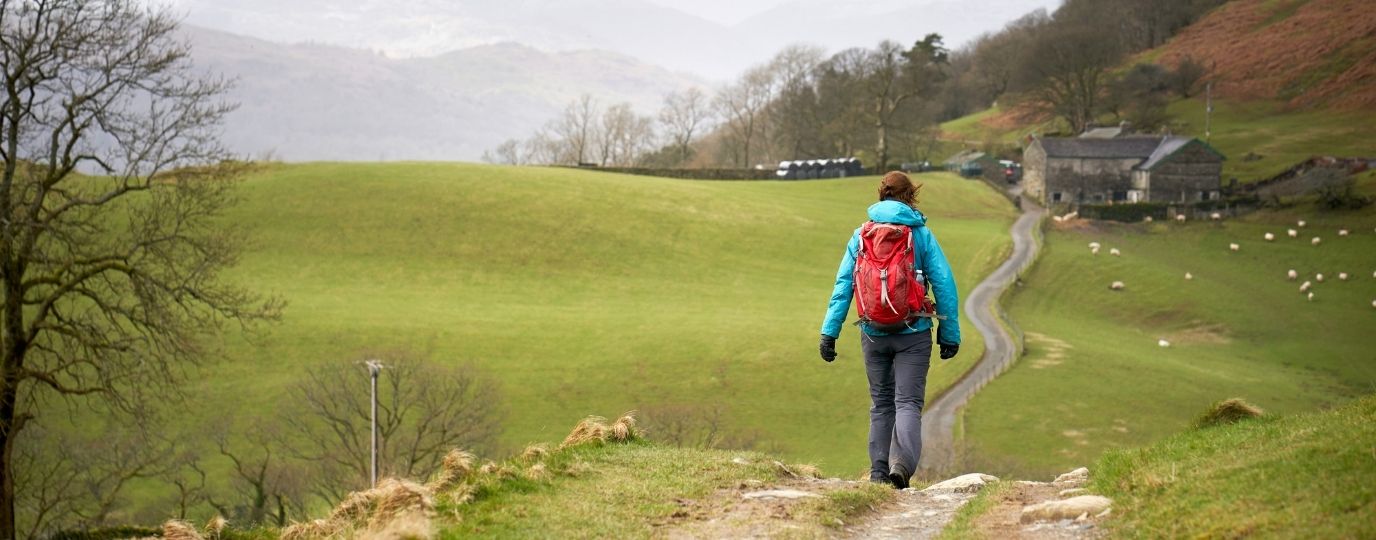Swap shorter journeys for foot or cycle
By walking or cycling instead, you’ll see a positive impact on your health and happiness, the environment and your wallet. Find out how you can swap shorter car journeys for active travel and make a real difference.
Why switch to active travel?
We’re all being encouraged to use our cars less and initiatives like Cycle to Work, Sustrans Big Walk and Wheel Week (March), World Car Free Day (September) and lift sharing certainly make it easier to leave the car at home and choose walking or cycling instead. It can often be difficult to change a routine but if you can start cycling or walking just twice a week, it will soon become a habit.
Let’s start by looking at the main benefits followed by some top tips to make it easier to leave the car at home.
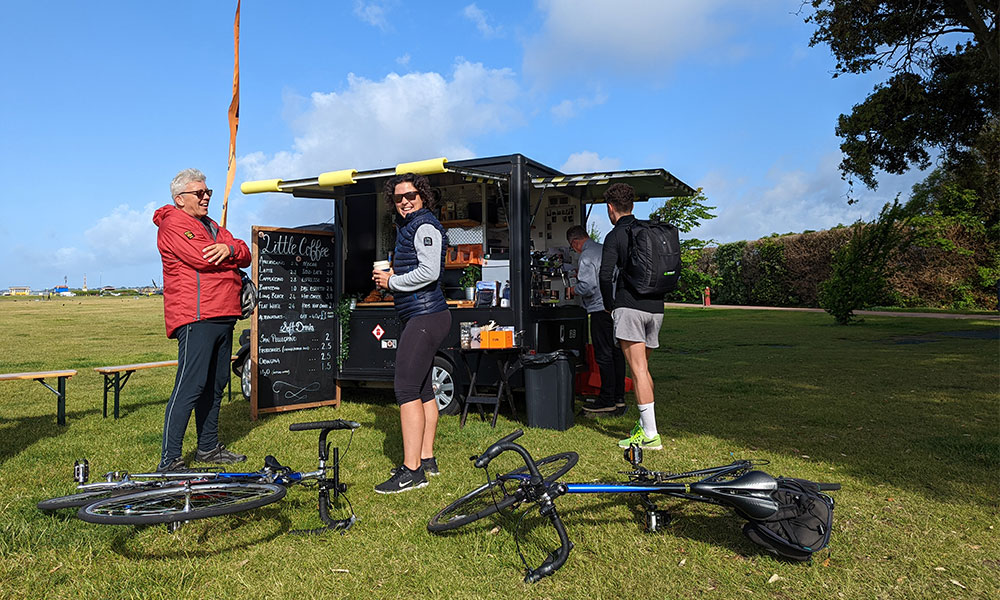
My morning cycle to Little Coffee Southsea
Protect the environment
Although active travel has seen a positive increase in recent years, a huge proportion of our daily journeys are still done by car. Transport remains the largest emitting sector of greenhouse gases and 92% of the distance we travel, is done by car, van or taxi.* Journeys under 2 miles make up around 45% of all urban trips and journeys below 5 miles make up 58% of all car trips.* Can you imagine the positive impact if we put a stop to car journeys under 2 miles? If 45% of urban car trips just vanished? That’s far less emissions and far less traffic on the road – quite literally, a breath of fresh air for everyone!
“Try swapping one or two car journeys per week for an alternative mode of transport”
Of course, there are some exceptions where we must use the car but if we’re really honest with ourselves, there’s bound to be one or two journeys each week where we could have left the car at home. And that’s all it takes! If everyone swapped one or two of their weekly car journeys for an alternative mode of transport, then we’d all see a notable change.
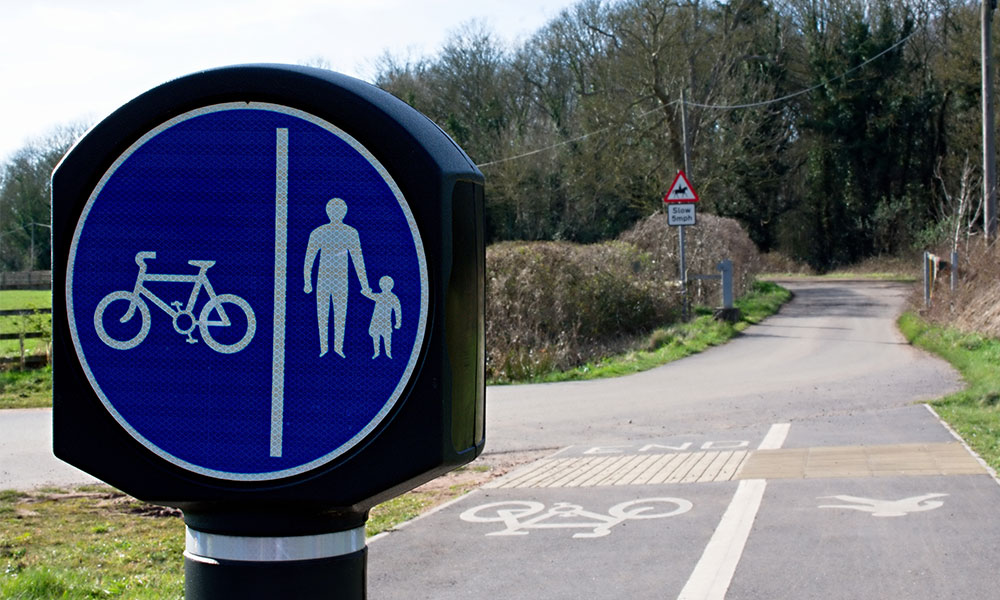
I’ve found some great local cycle paths
Stay happy and healthy
Recent reports suggest our modern-day, technology-filled lifestyles are becoming unhealthier. Jamie Oliver recently outed a shocking statistic that 1 in 4 children now leave school obese. In 2015, this was 1 in 5. Both figures are alarming and one way we can prevent this is to eat less and move more. The easiest way to become more active without taking time out of your busy day for exercise, is to use the time you spend in getting from a to b to move.
“Active travel makes roads quieter, safer and more attractive for people to walk and cycle – it’s a virtuous cycle.”
Just 30 minutes of exercise each day makes the world of difference, not just physically but mentally too. Fresh air improves wellbeing, increases concentration and productivity. How many times have you started the day feeling stressed because you’re stuck in traffic or can’t find anywhere to park?

Plenty of bike parking around my home city
Save money
With the cost of fuel continuing to rise, the most obvious way we can save money is by using less. So, by swapping a few car journeys a week for alternative transport, you can instantly reduce your weekly spend.
How I started leaving my car at home
I’ve been on several holidays where I’ve cycled or hiked instead of taking motorised transport. I’ve loved the freedom of the open road and feeling of constant fresh air, but could I really travel this way back in ‘real life’ at home? It was time to put it to the test…
I set myself the challenge of only taking my car on journeys over 6 miles. I must admit, I initially felt this was an impossible task. My life is crammed full of activities. I’m responsible for the weekly shop and I love spending time in the countryside, which is miles away from my home by the sea. What’s more, the Great British weather doesn’t always make a pleasant walk or cycle and even if I took the bus, I’d still have to walk some.
Growing up, my parents rarely used the car and they do so even less today. We walked to school, the local shops, the dentist, doctors and we even cycled out to the countryside at weekends. If my parents managed to limit their car use, even with a family, then so could I.
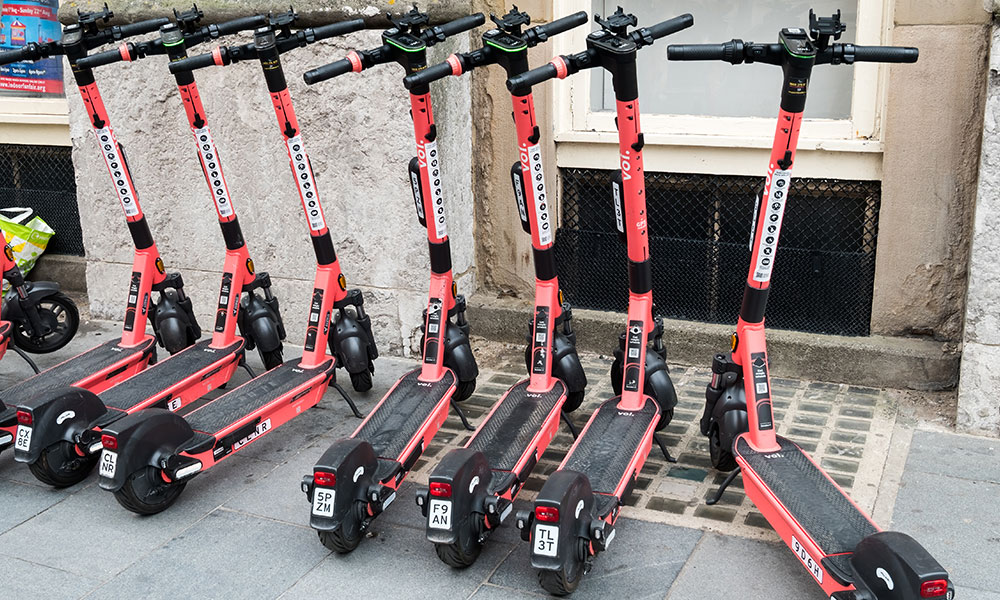
Voi electric scooters – simple to rent around UK towns and cities
Setting some loose rules
The easiest way to make this change is to take a look at each type of journey and set yourself some ‘loose’ rules. As mentioned, my rule of thumb is that if the journey is under 6 miles, which will take me off Portsea Island (Portsmouth), then I swap four wheels for two. My bike isn’t anything fancy, I picked it up off Facebook for £40 and I don’t have special bike bags, but I find a basic set of wheels and a backpack does just the trick. For short, less time conscious journeys, I walk. Sometimes I even rent a scooter as there are Voi scooter stations around town. These are a quick and easy way to get somewhere fast if you don’t own a bike.
Commuting
It comes as no surprise that the biggest reason for taking the car is getting to and from work. Unfortunately, I work over 35 miles away so it’s difficult for me to ditch the car without a considerable expense. However, I am lucky enough to be able to work from home, so I’ve swapped a couple of car journeys each week for home working. Ordnance Survey has a fantastic car sharing initiative alongside a Cycle to Work scheme. We also have electric car charging points and many of my colleagues are making the switch to greener vehicles.
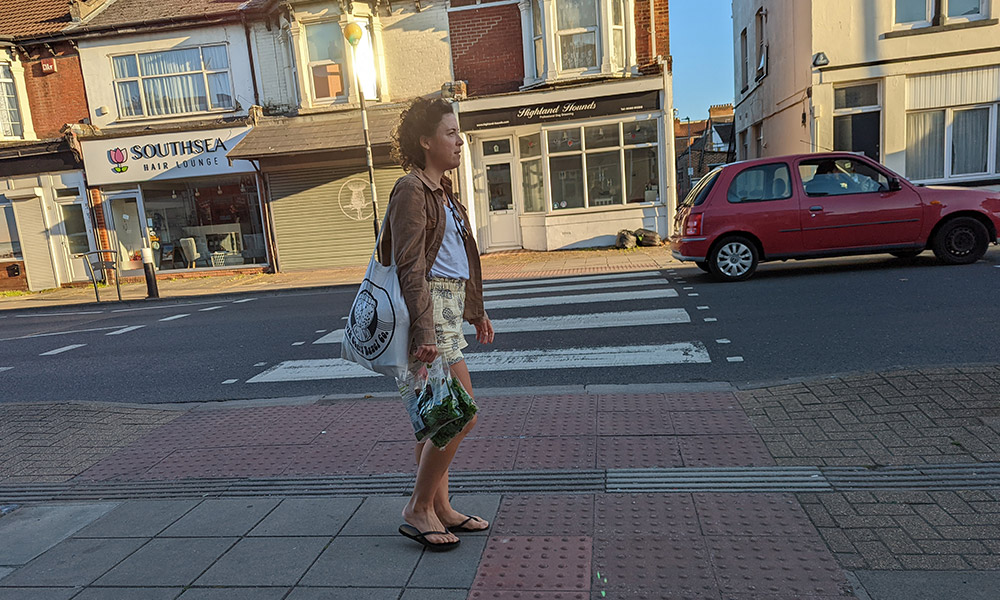
Me on the way home from the shops
Shopping
I must admit, carrying my weekly shop on my back doesn’t make the most leisurely cycle ride but it takes considerably less time for me to cycle to the supermarket than to wade through traffic and find somewhere to park. It also limits the amount of unnecessary goods I buy. Sometimes I won’t be able to carry the entire weekly shop on my bike but it’s highly likely I’ll be passing a smaller shop at some point in the week. I usually need to stock up on fresh fruit and veggies anyway. If there’s something big or heavy I need, I’ll make sure I go on my way home from work, when I’m in the car.
The school run
Most children go to a school within their catchment area which is between one and two miles from their home. This means the school run is one of the easiest journeys to walk. Many schools are in residential areas which are not designed to host a large number of vehicles in anyone go, so walking to school will not only benefit you and your children but the local community too. Walking to and from school has the additional benefit of teaching children about road safety, keeping them active and talking to them about their day.
Why not give it a go by taking part in Sustrans Big Walk and Wheel Week in March which inspires pupils to make active journeys to school, improve air quality in their neighbourhood and discover how these changes benefit their world. Any school can enter and win prizes each day for the most number of active journeys taken to and from school. It’s a great way to get kids involved and working as a team with their peers and over 900,000 children signed up this year.

Walking to school allows quality time
The Daily Mile is another free, simple and effective way to improve children’s physical and mental wellbeing. The initiative sees children running, jogging, wheeling or walking for fifteen minutes every day in their schools. Research has shown that The Daily Mile improves children’s physical fitness and has a positive impact on their mental health. Over 14,000 schools in 87 countries globally are now signed up to take part in The Daily Mile, improving the health, happiness and wellbeing of millions of children. Even if your child’s school are yet to sign up, you can make sure they benefit from a daily mile by walking to school.
Social activities
Cycling or walking to the gym or sports club is one of the easiest to stick to as it’s likely you’re going to be getting hot and sweaty anyway! It’s also a great way to warm up and cool down. Leaving the car at home when meeting friends for drinks is a given and walking and talking is a great way to catch up with family.
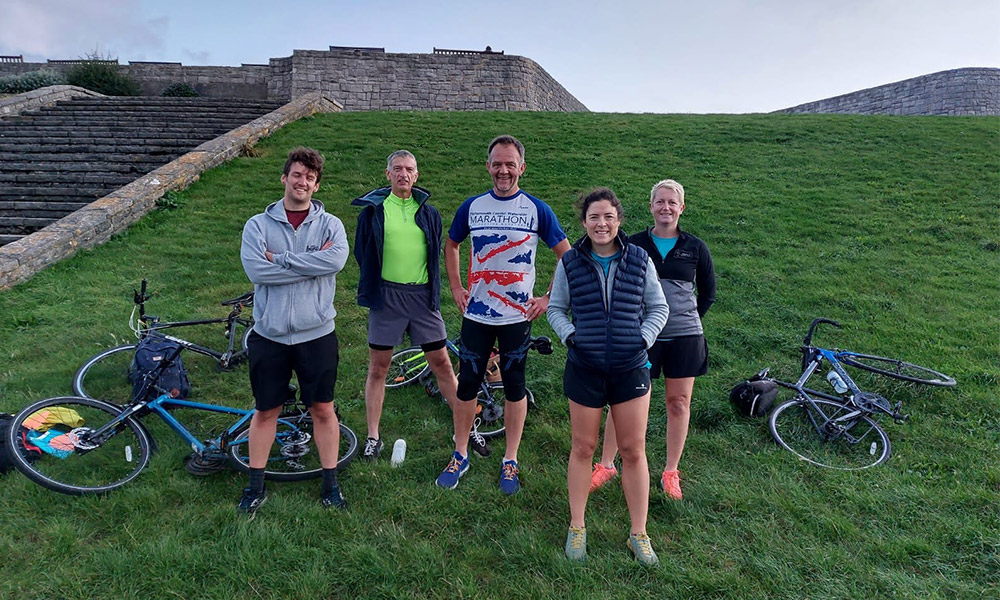
Me at my fitness club – everyone cycles here
Will I continue to leave the car at home?
Over the last year, the switch to active travel has bought a positive change to my life. I’m far fitter, more resilient (especially to the wind!) and feel better about myself all-round. Not only that, but I’ve probably saved a fair bob too. I’ve calculated that I now save an average of £10 per week on petrol. Now, that doesn’t sound much but multiply that by 52 and that’s over £500 a year!
At first, I was a little concerned about how I would keep my bike safe in a city renowned for bike theft, so I walked most of the time. However, a little research taught me that there are many safe places to park your bike across the city, many with CCTV. I also purchased a second hand ‘city bike’ which cost next to nothing so I’m less worried about leaving it when I go for a coffee or do my fitness class. For those times when I want to ride my good bike, I’ve invested in a secure lock.
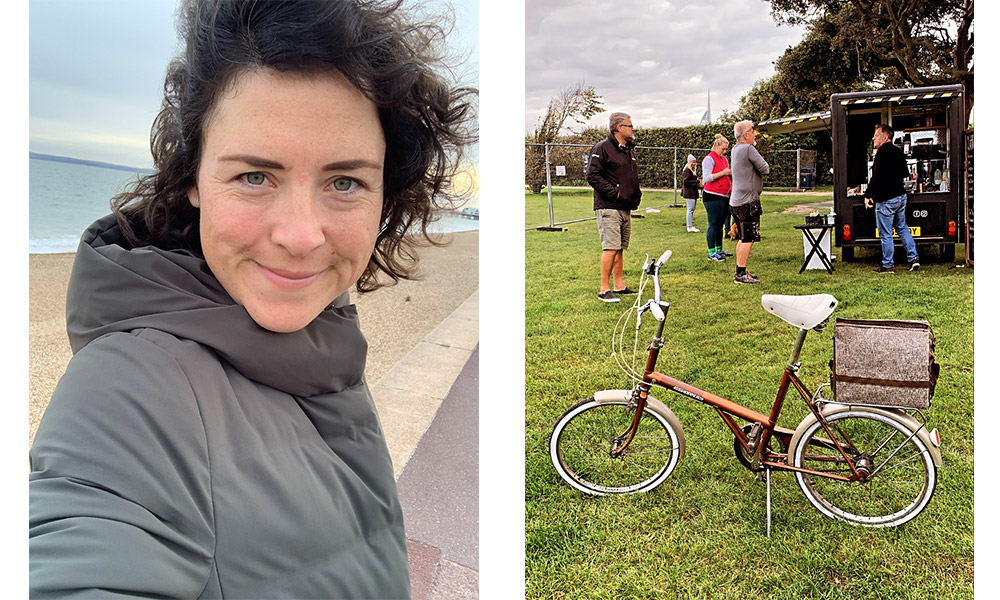
Walking for coffee and my £40 bike
With a bit of research about where to park and where to ride in the city, I now know the most cycle-friendly roads and paths, meaning I feel perfectly safe on the roads. I was also surprised to learn about all the cycling initiatives in my local area. From cycling safety courses, bike maintenance, group lessons and all of this is free!
Will I keep it up? Absolutely! This small change to my life appeared difficult at first but now it’s become an enjoyable part of my routine. If you’re thinking about making the switch, even if it’s just one journey a week, then I recommend starting during spring or summer when the weather is more favourable. In just a few weeks, it’ll soon become a year-round habit. One final word of advice, a set of waterproofs can be picked up relatively cheap and can make the world of difference when the weather doesn’t play ball.
Some great resources for you give it a go and make a positive change to your life:
- Sustrans Big Walk and Wheel Week (March)
- Bike week (June)
- National Walking Month (May)
- Walk to School Week (May)
- Sport England and Active Travel
*statistics gathered from the transport statistics for Great Britain and the active travel local authority toolkit.


